
Enphase have not got close to the cost reduction targets they set a couple of years ago.
Enphase is an American company that sells microinverters. These are small, fun sized versions of the larger string inverters most solar homes use. They work with individual panels and are either bolted beneath them or, in the case of AC panels, come already attached.
Enphase is the largest manufacturer of microinverters in the world and in Australia they give their product a 10 year warranty. This compares well with the 5 year warranty most inverters have. But Enphase does even better in the United States where they give their very similar, but not identical1, microinverters a warranty of 25 years.
Microinverters have some advantages over conventional string inverters. They cope better with the effects of shade and dirt, they do away with the need for DC cables on the roof which reduces the already small possibility of a fire, and they allow the performance of individual panels to be monitored.
But, as is often the case in life, reliable products that do neat stuff cost more than mediocre ones. (This only applies to material goods. Personally, I’m reliable, do neat stuff, and cheap.) Enphase microinverters have always commanded a premium price and so only make up a small portion of the total inverter capacity installed by Australian households2 with a large majority using lower cost string inverters.
But Enphase had a plan to turn this around. They knew if they wanted their microinverters to be anything other than a niche product used by hipsters, millennials, and other people we hate for no good reason, they would have to get their price down. Way down.
In April last year they revealed their grand plan to match string inverters on price-per-watt by the end of this year, driving normal string inverters out of business. But, as you may have noticed, since conventional inverter manufacturers aren’t going out of business left, right, and center, Enphase didn’t achieve this.
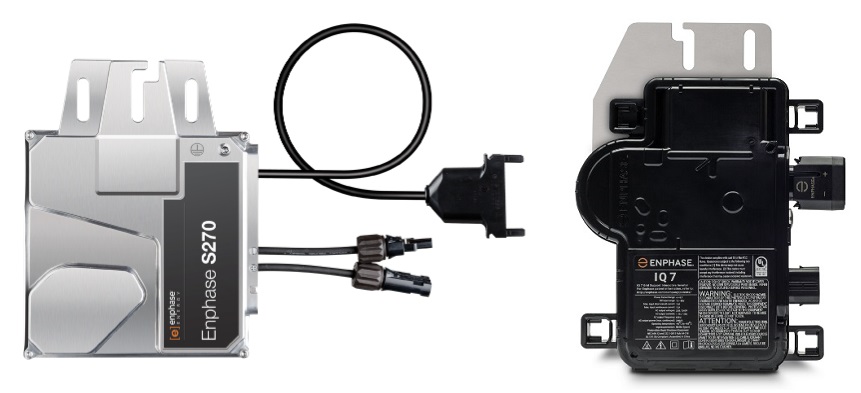
The S270 microinverter on the left is sold in Australia. The IQ7 inverter on the right should be available around the middle of next year. (They’re not quite to scale, but I’ll get into that soon enough.)
Enphase’s Goals
In April 2016 Enphase’s goals were:
- To produce the S290 microinverter in 2016 and the S300 microinverter in 2017.
- Get their cost per watt down to the average for string inverters.
They didn’t manage either.
They did produce an S290 microinverter, but instead named it the IQ6+. Why they called it that, I have no idea, because if someone told you their IQ was 6+ that wouldn’t be very impressive, as the average is 1003. But that’s probably actually pretty smart for a microinverter, so maybe it’s not such a bad name after all. But while the IQ6+ is being sold in the United States it’s never been available here. But Enphase never promised to sell it Australia as far as I am aware, so they did manage to achieve that part of their first goal.
What they completely failed to do was get their S300 microinverter, or IQ7+ as they now call it, on the market. It’s not currently available in the United States and while it is displayed on their Australian site, Enphase has told me they don’t expect it to be available here until around the middle of next year.
As for managing to get their price per watt down to that of string inverters — yeah, they really did not do that.
The IQ 84 Zoocel Models The Enphase IQ7
While the Enphase IQ7 and IQ7+ microinverters are not yet available in Australia, an IQ7 was on display in Melbourne and I was able to get world famous model Zoocel to pose with it. Here he is giving it his famous, “blue steel” look:
Now the thing about Zoocel is, he is a giant among men and towers over lesser members of humanity such as myself, so that microinverter isn’t quite as small as it looks. Here it is with a pen next to it for scale:
The IQ7 and IQ7+ are exactly the same size and as you can see, the black plastic case is around one and one-third pens in length. Which makes this picture Enphase put out early in 2016 rather interesting:
When I first saw this picture I thought, “Oh cool! Transparent covers! Finally electronic components get to display their strangely bright, lolly like colors to the world!” But it turned out the transparency is for illustrative purposes only and the actual cases are black plastic. But that’s not what I wanted to point out.
This picture clearly shows the S300 or IQ7+ as being one and one-quarter smart phones in height. But since its height is actually 21 cm, that’s one and three-quarters the length of my iPhone 54. So I’d just like to say kudos to Enphase for being environmentally minded and not throwing out their clunky, giant smartphones from the 90s.
Or maybe the problem actually is that Enphase failed to get the size reduction they wanted. If we compare the size and weight information on their datasheets for their S270, which is currently on a considerable number of roofs in Australia, and their new IQ7 and IQ7+ we get:
Going from a metal to a plastic case has saved them weight, but by volume it is now 6% larger. The S270 is rated for 260 watts and the IQ7+ is rated for 290 watts which means its capacity is 12% higher, so it’s sort of moving in the right direction, but that’s definitely not what we were promised in the colorful picture above and not what I expected in April last year when they said they were going for:
A polyurethane case has to take up more space than a stainless steel one to provide the same degree of protection, so an increase in size is unavoidable unless they shrink its guts, so it looks like they haven’t been able to get nearly as much gut reduction as they had planned. Since the size increased rather than shrinking down to that of a paperback, boasting about a size decrease may not have been the smartest thing to do. But the good news is it doesn’t matter that it has gotten larger5. After all, are you really hanging our for extra space underneath your solar panels? Are you planning to use it for dead possum storage?
Enphase Is Not Close To Matching String Inverters On Price
Back in April 2016 Enphase said they would get the cost per watt of their microinverters down to the average of string inverters by the end of this year, as this graph they flaunted shows:
At the top of the graph it says:
“50% cost reduction in 2 years”
And shows a reduction from around 21 US cents a watt at the start of 2016 down to 10 US cents a watt at the end of 2017.
They did not achieve this goal.
If they had, then with the advantages of microinverters, the only reason not to use them would be if you couldn’t get your hands on any because of how demand would massively outstrip supply.
The IQ6+ wasn’t sold here so I don’t know its price in Australian dollars, but what I can do is look up what it is being sold for in the US at the moment and compare its price per watt to that of US string inverters. I consider Enphase microinverters to be premium products, so I’ll compare them to what I consider to be two premium string inverters — Fronius and SMA, but I’ll also throw the budget model Solectrica into my comparison:
Because an Enphase microinverter always costs the same amount per panel, its price per watt doesn’t change, no matter what the total capacity of the system being installed is — whether it is around 1.5 kilowatts or 5 kilowatts. But if you want to buy a 1.5 or 2 kilowatt Fronius inverter it is much more expensive per watt than IQ6+ microinverters. But all string inverters larger than 3 kilowatts are cheaper per watt than the Enphase IQ6+. So for total inverter capacities of 4 kilowatts or more, premium string inverters will cost less.
While the prices in the chart above are in Australian cents, they are US wholesale prices and so aren’t very useful for working out how much you may have to pay here. But one thing you definitely won’t see in Australia are the SMA specials on the chart. These are older model SMA inverters made in Germany that are being sold for less than half the price of the new models made in China. All I can conclude from this is — Wow! Americans really like new things!
Enphase Has Had A Hard Time
It’s no secret Enphase has had financial difficulties over the past couple of years. Dark clouds with big frowny faces have gathered over the company and blocked the golden sunlight of profitability from shining down on them.
Here’s what the “wisdom of crowds” decided their shares were worth over the past five and a half years:
After hitting a peak of $16.85 US in 2014, Enphase shares fell to a miserable $0.70 US in May this year. Investor’s expectations of the kind of profit the company was likely to make in the future clearly collapsed to make its share price fall to 4% of its peak.
If I was a suspicious person and took a dim view of companies that are trying to get us to give them our money, I would probably think that Enphase knew full well they were on the brink of disaster and the report they produced in April last year was just a con job to maintain confidence in the company and convince people they had the skills and technology to create a revolution in microinverter technology they never expected to achieve. So thank god I am extremely naive and gullible6 and never have unwholesome thoughts like that.
I only ever have unwholesome thoughts like this:
http://gph.is/11xPoqj
Enphase Claws Its Way Back From The Abyss
While it is difficult to see on the graph above, Enphase share prices have recently surged upwards and may one day soon break through those frowny clouds above. This graph of share prices over the past year make it clear:
As I write this, their share price sits at $2.61 US, which makes quite a change from the stinky, sinky share days of May.
The reason for the turn around is Enphase managed to produce a positive quarterly report on the 8th of this month. Actually it might be more accurate to say it was better than expected rather than positive, but it’s still a good sign that things are turning around and is evidence they will remain in business and be available to meet their obligation to repair or replace microinverters that fail within their warranty period.
But this turn around did not come easily. The company was restructured, which is executive talk for sacking almost one-third of their employees. In addition, the CEO Paul B. Nahi got the chop and in August he was replaced by Badri Kothandaraman. Badri will be paid a base salary of $350,000 US7 and can receive an extra 75% of that in bonuses and he gets 1,000,000 shares in stock options. This is a big cut from the $525,000 base salary the last guy got, so it’s good to see the people at the top are feeling the squeeze too.
In the past, my impression of Enphase was the company contained people sincerely dedicated to producing high quality technology and doing their bit to save the planet. And I’m sure this is still true for many of those who are left. But when a company fails to meet its stated goals by, not by just a bit, but by ridiculous amounts, it tends to make me shift them from the “sincere and dedicated people” category to the “sincere and dedicated people who can’t be trusted and so probably aren’t really all that sincere” category.
But Enphase has a new CEO now and they can blame everything on the old guy — like when we get a new Prime Minister8. So I’ll be paying attention to announcements coming from Enphase and judging how ridiculous they sound. Hopefully they’ll stay grounded in reality and I hope Enphase will remain in business and continue to improve microinverter technology.
[Full Disclosure: I once thought about buying Enphase stock, but then I realized it would cost money I could instead immediately spend on chocolate.]
[Full Disclosure Part 2: Finn owns Enphase stock. He paid about $6 for it because fools and their money…]
Footnotes
- American current is different from Australia’s and most of the world’s. ↩
- Be wary of any boasts you hear from Enphase about the number of inverters they have installed. When you’re producing little baby inverters it’s the total capacity installed that relevant, not the total number. ↩
- Personally, I have an IQ of 150. I took an IQ test and got a score of 70, but I completed it in half the allowed time, so I doubled it. ↩
- This was the free smartphone I received as a result of living in a country where idiots will give you their old phone so they’ll have an excuse to buy the latest model. ↩
- Technically a smaller inverter will allow air to circulate under panels more freely and so help keep them cool, but that effect is going to be very minor. ↩
- Did you know the word “gullible” isn’t in the dictionary? ↩
- I know this may sound hard to believe, but some US CEOs make even more money than this. Marc Lore, CEO of Walmart US E-commerce, received $244 million US last year, so clearly he must be 697 times better than Badri Kothandaraman at his job, as any other conclusion would mean CEO compensation isn’t entirely fair. ↩
- Which may happen soon. ↩


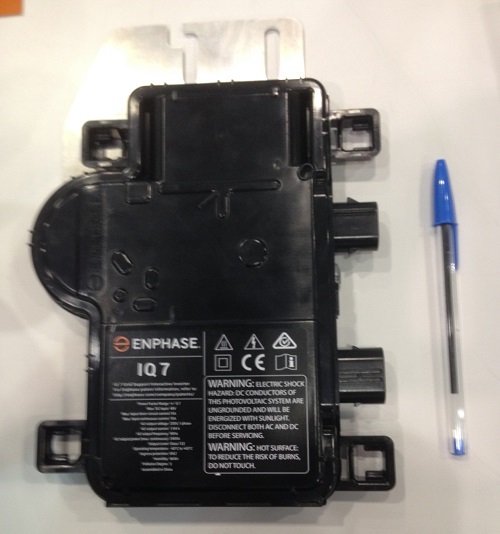
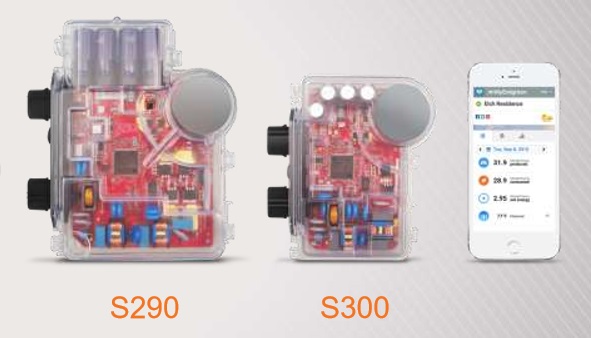


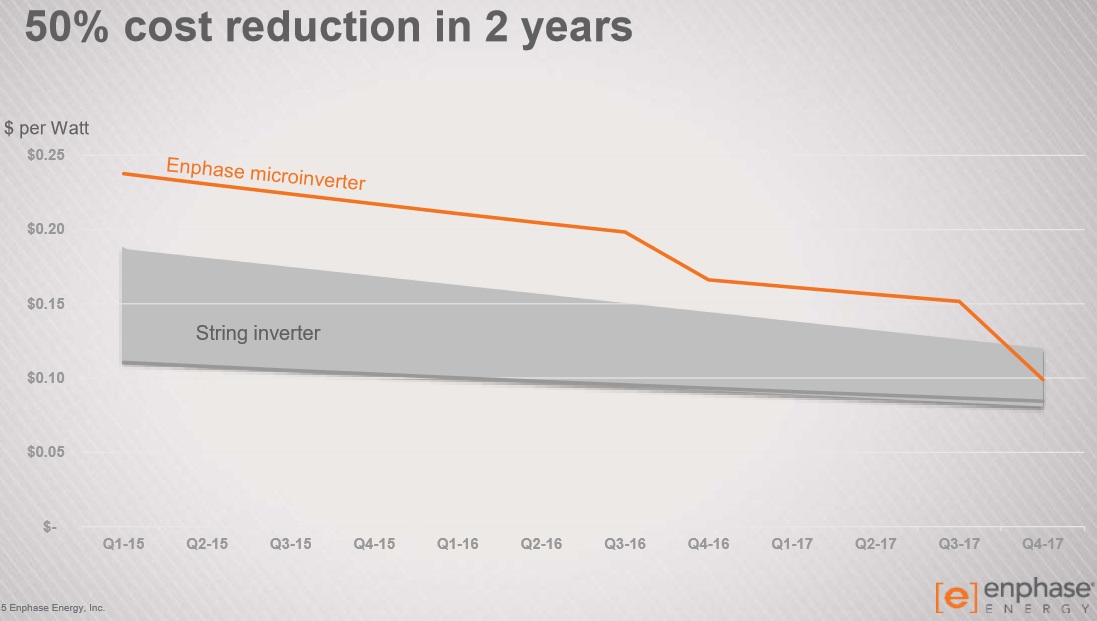
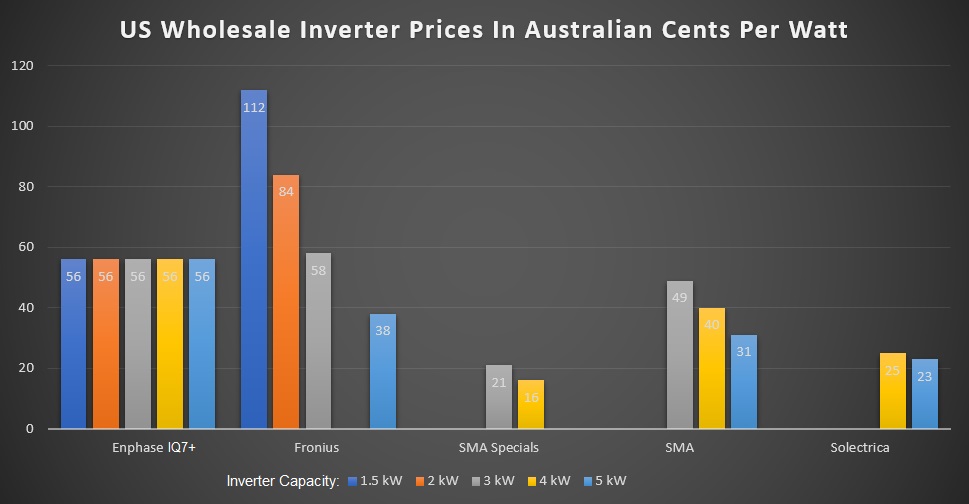
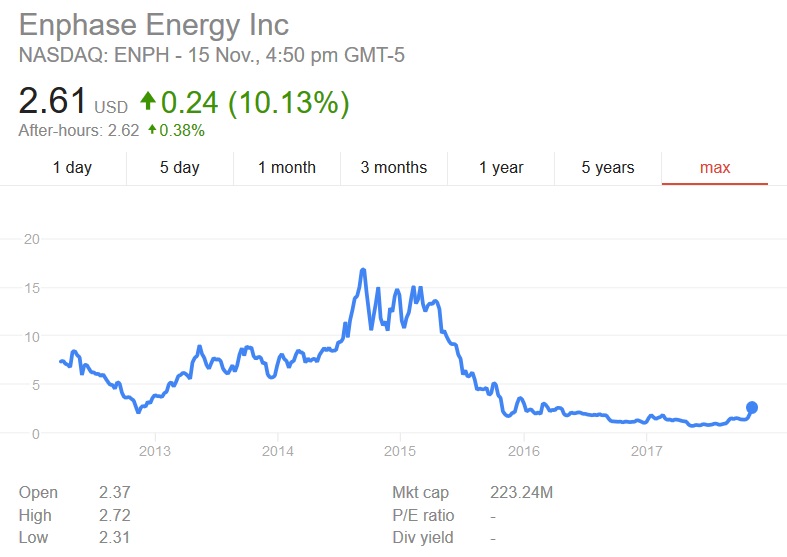
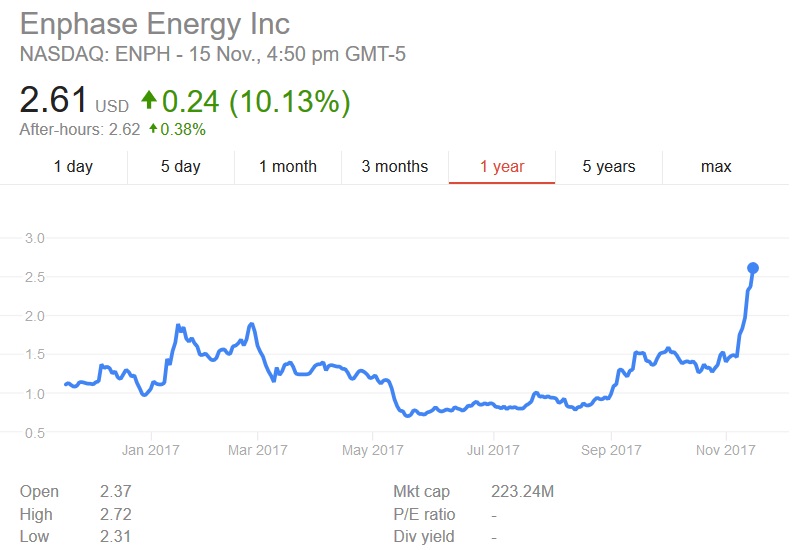
 RSS - Posts
RSS - Posts



Maybe a way of looking at it is the cost and value of the additional features on say the modal size of systems in Australia.
For a likely x cents per kw, which works out to $y per modal installation of Z kw you get:
A better shade function
B better dirt function
C no DC wires so lower fire risk
D longer warranty
Maybe there are quantifiable gains in output from these features that can be estimated.and compared to the estimated additional cost
Or is the message that
1. They just aren’t anywhere near worth the extra cost in spite of the better feature set except on systems under J size, or
2. The company has such an uncertain future that the warranty is worthless, or
3. They are liars so don’t deal with them
I just couldn’t divine the primary message behind the post.
Do you have any specific recommendations or decisions on what you would do if buying a new, commonly sized system with your own folding stuff?
Whether or not Enphase microinverters are worth it will depend on personal preferences. Obviously there are people who like them, otherwise they would be out of business.
I’ll be doing a post reasonably soon comparing the economics of microinverters, DC optimisers, and solar panels with string level optimization to help people make up their own minds.
As for if they are liars, I can say they are far from being the most dishonest US company and they have built up a pretty good reputation, despite missing their announced targets by light years. I am just hope their statements will be reasonable in the future.
The point of the post is simply that Enphase made a bunch of promises a couple of years ago that they would hit certain absolute targets by Q4 2017, so let’s see if they kept them.
Whether Enphase inverters are any good or not is a separate matter. Personally if I was to buy a solar system today, I’d be buying Enphase. But that doesn’t mean we turn a blind eye when they massively over promise and under deliver. Just ‘cause Elon does, it doesn’t make it right.
For the non technical geek achieving this target or missing that target probably does not matter very much in the scheme of things where a properly optimised system reduces domestic power bills between 80-90% pa. With payback periods less than or equal to 5 years and a useful life of say 15 years then savings of $3,000 per annum after payback totalling $30,000 is an awful amount of money for Mr and Mrs Average. The real question is the replacement system in year 15 likely to cost $30,00 or are we on a self perpetuation financial winner? Now go ahead lets have nickel and dime comments I need something that will make my day.
Pretty tough on Enphase there old chap…. The most important thing for Enphase has not been its near miss with the s300 aka IQ7+, the most important thing is the management change replaced with serious fiscal conservatism and accountability. It’s only been about since April that repairs have really been underway. Nevertheless, you do have the IQ7-X which can compete with SunPower’s X22 360W panel. Furthermore, the IQ7’s weight attribute is incredible. Halving the wiring costs, too. Heck, I don’t know what IQ really stands for, but I know installers are starting to refer to Enphase’s IQ as Installs Quickly microinverters. I love my 80 Enphase microinverters Ronald, and with NEM, I am grandfathered in and actually make money each year off of my utility company. You tout high-end central string inverters but you don’t delve into attributes such as safety or true reliability. Look, one of my microinverters is bound to fail within 25 years. Big deal. The other 99% of my system will continue to work, and I can address the problem at my leisure. When the central string inverter fails, and yes, it will fail, then what? You need a replacement. You have a crisis. How long is that going to take. Replacing a microinverter is childsplay. Enphase is simplicity, safety and true fault tolerance aka reliability. This is what Americans pay for — what’s the $1/Watt cost on peace of mind, Ronald? Go Enphase!
If ‘Peace of Mind’ is one’s aim one couldn’t do better than spend $10 on a box of Chateau Cardboard.
Incidentally, replacing my string inverter took about three minutes the only time it stopped. A new one was delivered by courier at 7 am the next morning ~ at no charge to me ~ the driver helped me lift it to the wall-fixtures (yep! working on the ground) and the TWO plugs each took less than a minute to attach.
My personal preference is to set up a ‘bus-bar’ (?) behind a regulator at a convenient groundlevel position and then run, say, half a dozen separate circuits off that, each with its own small (& cheap) full sinewave inverter. All the benefits of which you speak and none of the bullshit.
….and you can also save a lot of waste by running appropriate circuits straight off the busbar in VDC.
You’re right! —> GO!! Enphase….
Your setup is a good way to achieve some redundancy and scalability with string inverters. But you don’t get “All the benefits” with “none of the BS”.
Your scalability, redundancy, optimisation, and monitoring are better (eg. 4 string with two inverters) but still not panel level as with micros. And there are negatives, such as diluting the cost advantage of a single large inverter, needing to combine monitoring across multiple inverters, and difficult export limiting.
There is also the safety factor you don’t get (lower AC vs higher DC).
I won’t mention quicker install of micros because I’m not convinced on that one.
Yes, swapping a central inverter is easier than a micro on a roof. I deem the current generation of micros are more reliable than a central inverter (because they operate at lower voltage and power), but when you multiple that small failure rate by the number of micros you lose that benefit.
The redundancy thing is probably over-thought. If you lose a central inverter and hence all production for a couple days does it matter? (maybe yes if you’re off-grid)
There are pros and cons with all setups. It depends where you put your priorities. Even if you are anti-Enphase remember that market competition is good. When customers buy Enphase the other players will react to offer functionality to counter the micros (eg. optimisers). So we all win 🙂
“Incidentally, replacing my string inverter took about three minutes the only time it stopped.”
I know of NO central inverter that would take 3 minutes to swap out. All string inverters I know of are hard wired from your combiner box (DC) to your DC string connections in the central inverter. So it is DEFINITELY going to take longer than 3 minutes to swap out a typical central inverter IMO. On the other hand a micro inverter on a roof is definitely more work unless it is a inverter on the edge of the array or top or bottom, but if it is in the middle it can be hard to get to.
And it seems like with the micro inverter attached to the back of PV modules that enphase has patterned with will make the AC modules very popular unless they make the same mistake as before making the combination more expensive than the individual component parts. Then again why shouldn’t you pay a little more for a premium product that has a 25 year warranty (in the US but not Australia? You pay a premium price for a Sunpower PV module right? (they bought out solarbridge few years ago and are now pushing their version of a PV panel and micro inverter called Equinox)
It may only take a short time to replace a string inverter if it’s a like for like swap, but that’s assuming you can get the replacement inverter at all. In some cases, it can take more than a month to get the warranty replacement inverter. In the meantime, you have zero production, but are still paying higher solar consumption rates. No very good value then!
Ronald and TJ.
The real story here is that enphase inverters soon be able to operate even when the grid goes down. That is sort of the holy grail in a way. The BIG issue with PV grid tie is when the grid gets down your PV array becomes useless. SMA has addressed this in their inverters that have a 1500W circuit that will work off their dating inverter when the grid gets down and the sun is shining. Those people who lost power form all those hurricanes sure know that a PV array is worthless without the power company providing the frequency and voltage to make all lien tie inverters to work.
I was one of the first to do an enphase system 7 years ago. After three complete inverter replacements (28 each time) I finally gave up. The utility frequency was out of wack and I could not get them to operate properly so I ended up with a string inverter. But the real culprit was that I now have gas wells that where not here when I originally installed the enphase system. These wells have all sorts of equipment that cause line distortions etc. that I believe effected the enphase inverters and the utility company did nothing to solve the issue.
Anyway my last enphase install was a 9 kW using the IQ6 and it seems to be working great so far.
I look for the day that you an use enphase without ANY grid connection and be totally off grid. I believe they are working on this.
One last thing. They need to reduce the price of their battery pack. Their battery pack is just to expensive. No wonder they do not talk much about it. At one time they said had like 20,000 preorders. But I bet they have not even sold 1000 of them.
Oh and I bough enphase stock at $.80. Maybe I can retire soon!
Re the batteries. They are also too small. Modular is nice but when you need to install four just to get 1000 W power output! That probably should have been their starting point. They are 1st generation, I’m hoping they’ll get better like with the micro generations (they were horrible to start but are now very reliable).
There have been plenty of positive Enphase articles and comments on this site previously. Ron was highlighting relevant concerns about company performance and health. These should form part of a consumer’s decision process. I have become a big fan of Enphase technology and am about to invest in a system myself. However I’ve spent many hours contemplating the matters highlighted in Ron’s article. After all, if Enphase were to go bust then that would impact my own investment (eg. warranty, Enphase Cloud, system expansion, upgrades, etc..).
My conclusion was that Enphase is the outright market leader in micro inverters. Micro inverters in turn are stealing market share on central inverters. Therefore Enphase sales will grow exponentially and they will survive and flourish.
Worst case: I’m wrong and Enphase goes bust. I could not get new hardware and at some point (after losing enough micro inverters, over many years) I’d rip them all out and re-wire with a central inverter. That is not really a huge worst case considering in ‘normal’ systems central inverters do fail and are replaced. Yes, in my ‘worst’ scenario there is the lack of warranty, re-wiring cost and initial premium paid for Enphase. But it is not the end of my solar system (in either meaning of the words 😉
In terms of cost. It is a premium product. I was hoping for the price drop myself, but I’m not waiting. I agree with Paul’s comment that there are inherent benefits with the micro inverters that could be factored into Ron’s cents per watt chart. Maybe a 10% boost for system efficiency.
The above statements are personal opinion and not intended as investment advice 🙂
Hi Ronald,
If you are going to do a micro invuerter vs optimiser panels could you have a look at JA smart panels. I can’t find anyone in the country area who knows about them re cost comparisons. I have ordinary JA panels but the company that installed them went bust and would like to add some smart panels to solve my shade problems.
I can see if I can find out something about them.
Targets are where you want to be I like the fact they seem to consolidate there focus on there quality rather than quantity. Still a top product leading in the Micro Space and offering a complete home saver package would like to see the automation further develop and improve and larger battery sizes. 2.4 and 4.6 kw that would place them on par with others.?
Reading elsewhere, it looks like the company may have prioritised standardising their product so the one model complied with regulations across all potential markets globally. This would allow them to reduce internal operational expenses, but also enables them to open up new streams of revenues in zones they haven’t previously had access to.
If this is is the case, it’s a big win-win for the company. Reducing size obviously has limited business benefit. Being price competitive with string invertors is nice as well, but the sales uptick of being cost competitive is unlikely to compete with the revenue boost of entering new markets.
Puzzling they didn’t announce on these lines, but failing to live up to their announceable from 2 years back is probably a good thing given what they appear to have achieved.
Great observation. Enphase is a jewel in the solar industry. Their 7 major generations of microinverters have now culminated in a product that is a leader in the residential solar PV arena with key attributes of reliability, safety, performance, longevity and above all else, simplicity — both in installation and management. I live in the Florida and have 85 Enphase microinverters on my home/barn, and I have become a true believer in their decentralized power topology solution. The microinverter is the answer for the masses seeking reliable and safe solar PV solutions, and the AC Module is truly the next evolution of that product. In the last decade of microinverter technology evolution, many companies have come and gone; there are but a few contenders remaining, and Enphase Energy, in my opinion, is the champion of that arena. By 2019 timeframe, their line of IQ (Install Quickly) product will span the globe and give people true microgrid capability and freedom of power from the power monopolies. Go Enphase!
Interesting looking at this review from 2017 against where Enphase is now. They have shrunk the company by over 40%, simplified product lines, come up with stunning innovation in their product lines – assembled a world class management team that plan and communicate to the market brilliantly. Their finances have gone from shaky – what list item to solid with a buy flag.
They seem to have really hit their power stride now – be interesting to see how the next three years goes for them with their Ensemble / IQ8 micro grid forming / grid agnostic solutions position.
This was a really insightful post—thanks for the honest take on Enphase! It’s impressive that they continue to offer strong warranties and product advantages despite missing their aggressive cost targets. The microinverter benefits are clear, especially for shaded or complex roof setups, but the price gap is still a major hurdle. Hopefully, they keep innovating and can eventually balance quality with affordability. Always appreciate thoughtful analysis like this—keep it coming!